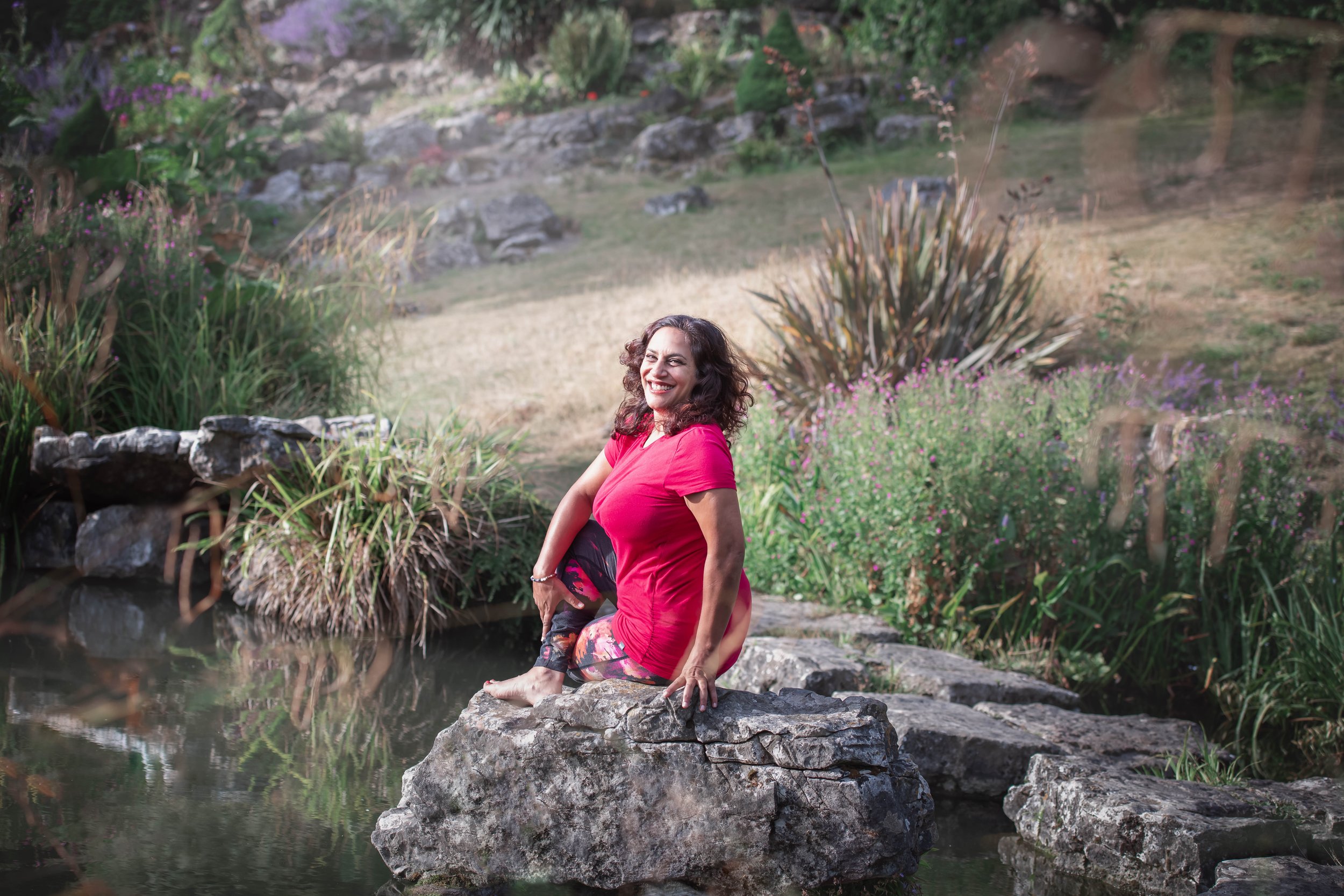
YOGA
Mala is passionate about yoga and women’s health and the benefits of menstrual cycle awareness.
Mala has found that a combination of osteopathic care including very gentle visceral osteopathic techniques and yoga practices including breathwork has helped women of all ages through the normal changes their bodies go through, with respect to their individual menstrual cycle.
In 2019 Mala completed a Woman’s Yoga Teacher Training with Uma Dinsmore Tuli PhD a yoga therapist and expert in yoga therapy for woman’s health. Author of Yoni Shakti.
Embodying the practices from the course and menstrual cycle awareness and working with my own posture have been instrumental in helping me run my busy practice and still feel vibrant, healthy, and vital. Learning to rest and relax in equal measure with work and activity through a changing cycle has been incredibly valuable and passing these wonderfully nourishing yoga practices and knowledge to my patients where appropriate has enhanced my practice as an osteopath.
Women’s Health Yoga (Online)
Reconnecting with your body. Honouring life phases. Practising in safety.
After taking time away from teaching, I’m delighted to return with live online classes dedicated to women’s health at every stage of life—from menstrual wellbeing to peri/menopause transitions, postnatal recovery, stress, fatigue, and the everyday need to rest and replenish.
I completed a Women’s Yoga Teacher Training in 2018 with Uma Dinsmore-Tuli, whose work in womb yoga and cyclical wellbeing continues to inspire my approach. Since then, my 23+ years as an osteopath and my ongoing study of the body–mind connection have deepened what I bring to class. Most recently, I completed a 60-hour Somatic EMDR training with The Embody Lab. Although I am not offering EMDR therapy, the somatic, trauma-aware, and polyvagal-informed principles from that training now shape the way I guide movement, rest, and nervous system regulation in yoga.
What Makes These Classes Different?
Body-led, not performance-led
We move from the inside out—sensation before shape. Modifications are always offered.
Polyvagal-informed regulation tools
Gentle breath, orienting, grounding, and paced interoception to support vagal tone, safety cues, and downshifting from fight/flight or freeze.
Somatic awareness woven through
You’ll be invited to notice where you hold, where you soften, and how your body communicates. No pressure to share—just permission to feel.
Trauma-sensitive space
Choice is central. Cameras optional. You can rest at any time.
Women’s health focus
Themes may include menstrual cycle support, pelvic floor balance (strength and release), hormonal shifts, fatigue, sleep, and compassionate rest practices.
Who These Classes Are For:
Women seeking a gentler, more restorative, body-wise practice.
Anyone navigating menstrual changes, peri/menopause, postnatal recovery, or stress-related tension.
Those curious about the nervous system and how movement, breath, and awareness can support emotional and physical wellbeing.
People who prefer a non-competitive, inclusive, and size-/age-friendly space.
(Trans and non-binary folks with a relationship to women’s health topics are welcome—please reach out if you’d like to confirm it or discuss language used in class.)
What to Expect in a Typical Class
Arrival & Settling (5 min) – Orientation to space, breath check-in, nervous system landing.
Gentle Somatic Mapping (10 min) – Small movements, sensory tracking, contact with ground/supports.
Women’s Health Sequence (20–25 min) – Cyclical or theme-based postures; options seated, supported, or standing.
Regulation & Rest (10–15 min) – Polyvagal-informed practices: paced breathing, humming, touch points, or guided rest (yoga nidra–inspired on some weeks).
Integration & Closing (5 min) – Optional reflection; how to carry one small practice into daily life.
Safety, Scope & How I Work
I am a registered osteopath with 23+ years in clinical practice, a yoga teacher trained in Women’s Yoga (2018, with Uma Dinsmore-Tuli), and have completed a 60-hour Somatic EMDR training. While I bring somatic and nervous-system-informed principles to class, these sessions are educational and therapeutic in a general wellbeing sense—they are not psychotherapy, EMDR treatment, or a substitute for medical care. If you are currently in therapy, we can discuss how to make the practices supportive and non-overlapping.
Class Logistics
Format: Live via Zoom (camera optional).
Length: ~55 minutes.
When: [Insert day/time — e.g., Tuesdays 7:30–8:25 pm UK time].
Series: Rolling 6-week blocks / drop-in options. (Edit to suit.)
Recordings: Available for 7 days if you can’t attend live. (Optional.)
Price: [Insert pricing tiers: block, drop-in, concession].
What You’ll Need
A mat or firm blanket.
Cushions/bolsters (pillows or folded blankets work).
Optional: eye pillow, hot water bottle, or shawl for rest.
Stable internet connection; quiet-ish space if possible.
HOW TO JOIN
Step 1: Book a class or 6-week block through my online booking page.
Step 2: You’ll receive a welcome email with Zoom link, what to bring, and a short health questionnaire.
Step 3: Join live or practise with the recording (if available). Start where you are—movement and rest are both valid.
Ready?
FAQs
-
No. Classes are accessible and adaptive. You can stay seated or practise lying down.
-
Yes. We include cooling, grounding, and fatigue-sensitive practices, plus rest-based regulation tools.
-
Totally okay. We work gently with the nervous system, and you always have choice to pause, rest, or turn camera off.
-
We use simple practices (breath pacing, grounding, orienting, vocalisation, supportive touch) that help signal safety to the nervous system and support regulation.
-
No. I’ve completed a Somatic EMDR training that informs the way I hold space and support regulation, but I am not providing EMDR therapy in yoga classes.




